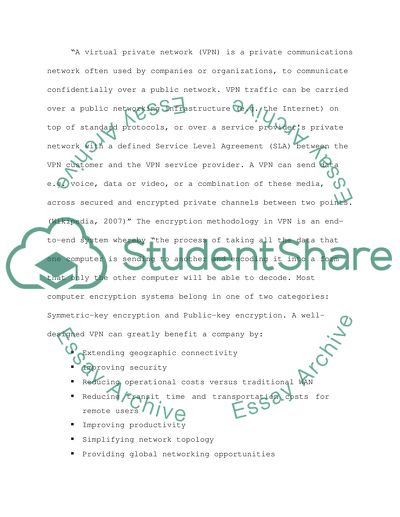Cite this document
(“VPN Virtual Private Network Essay Example | Topics and Well Written Essays - 1500 words”, n.d.)
Retrieved from https://studentshare.org/miscellaneous/1539560-vpn-virtual-private-network
Retrieved from https://studentshare.org/miscellaneous/1539560-vpn-virtual-private-network
(VPN Virtual Private Network Essay Example | Topics and Well Written Essays - 1500 Words)
https://studentshare.org/miscellaneous/1539560-vpn-virtual-private-network.
https://studentshare.org/miscellaneous/1539560-vpn-virtual-private-network.
“VPN Virtual Private Network Essay Example | Topics and Well Written Essays - 1500 Words”, n.d. https://studentshare.org/miscellaneous/1539560-vpn-virtual-private-network.


